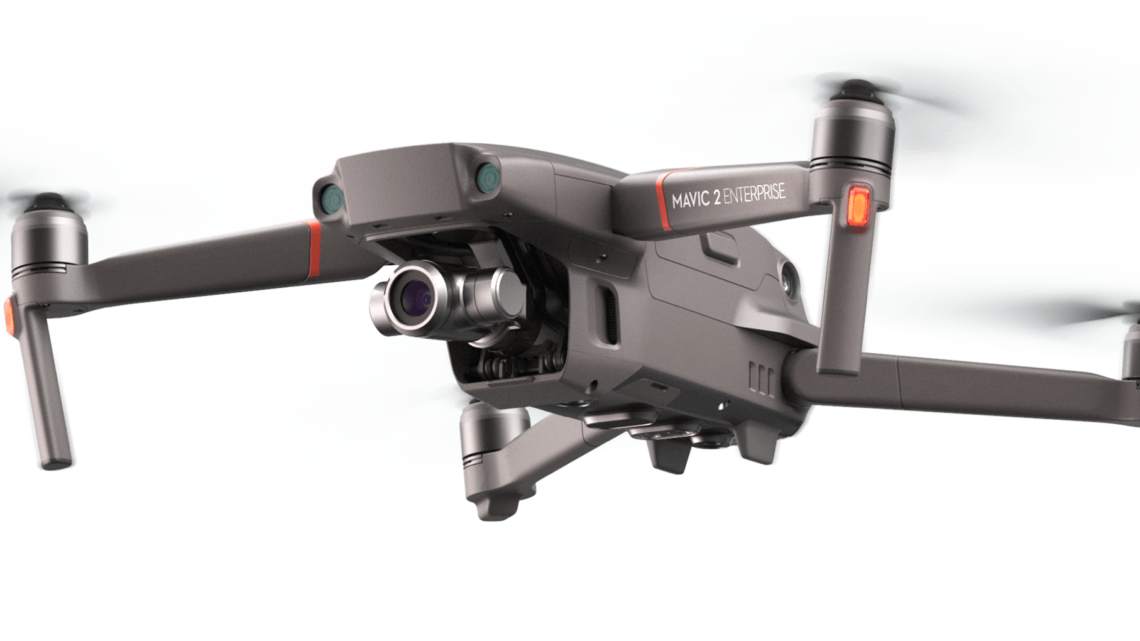
Review – The DJI Mavic 2 Enterprise – It’s Finally Here!
October 29, 2018I’ve been holding off on buying a Mavic 2 for various reasons including, hoping to see what the next Phantom series model might have up it’s sleeve, hoping for a fix for the various video issues that plague the current Mavic 2 Pro and, of course, seeing what the DJI Mavic 2 Enterprise might have to offer.
Now that it’s finally here, let’s review the specs and features to see what makes it worthy of the name Enterprise…
THIS POST MAY CONTAIN AFFILIATE LINKS. PLEASE SEE OUR AFFILIATE DISCLOSURE FOR MORE INFORMATION.
Table of Contents
What’s the Big Difference?
The major difference in the Enterprise model vs the Pro and Zoom has got to be extended port that allows you to connect additional devices onto the drone. No real details are available at this time but, based on observation, it appears this port will allow communication and power transfer to operate the attachments.
Here’s the promotional video for the DJI Mavic 2 Enterprise:
What Kind of Devices are Available for This Extended Port?
As it stands right now, there appear to be three different devices available for the DJI Mavic 2 Enterprise:
 M2E Spotlight – A dual spotlight that enhances your vision in low-light areas. This will help you to locate lost persons and direct them to safety, etc. Check out DJI’s how-to video on using the spotlight:
M2E Spotlight – A dual spotlight that enhances your vision in low-light areas. This will help you to locate lost persons and direct them to safety, etc. Check out DJI’s how-to video on using the spotlight:
 M2E Speaker – This loudspeaker attachment will allow you to communicate with ground teams and effectively guide others. It’s interesting to note that it’s not a live broadcast but rather playback of recordings you can make. Check out this video from DJI on how to use the speaker:
M2E Speaker – This loudspeaker attachment will allow you to communicate with ground teams and effectively guide others. It’s interesting to note that it’s not a live broadcast but rather playback of recordings you can make. Check out this video from DJI on how to use the speaker:
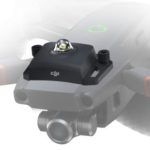 M2E Beacon – This accessory provides additional safety while conducting night missions, allowing other pilots to easily spot your from a distance. Here’s DJI how-to video on using the beacon:
M2E Beacon – This accessory provides additional safety while conducting night missions, allowing other pilots to easily spot your from a distance. Here’s DJI how-to video on using the beacon:
These are the three options available at the moment. Rest assured more will follow as DJI and third parties come up with even more devices to use in various professions and situations.
What Other Features are Unique to the DJI Mavic 2 Enterprise?
DJI didn’t just stop with the extra port for accessories. They really nailed it when it comes to security, situational awareness and tracking.
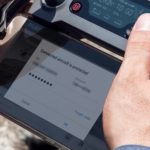 Password protection! DJI has finally introduced password protection, requiring a password prior to gaining access to the drone and it’s contents. This has been a feature many have asked for in the past and now it’s available on the DJI Mavic 2 Enterprise. I don’t know if it will trickle down to other models in the line but it’s nice to see the DJI has introduced it somewhere.
Password protection! DJI has finally introduced password protection, requiring a password prior to gaining access to the drone and it’s contents. This has been a feature many have asked for in the past and now it’s available on the DJI Mavic 2 Enterprise. I don’t know if it will trickle down to other models in the line but it’s nice to see the DJI has introduced it somewhere.
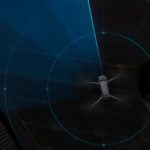 DJI AirSense – This features will provide real-time positioning alerts on nearby manned aircraft. I don’t know if this is tied into ADSB or how it works but this is a great safety feature, especially for those flying in areas where aircraft are commonly seen.
DJI AirSense – This features will provide real-time positioning alerts on nearby manned aircraft. I don’t know if this is tied into ADSB or how it works but this is a great safety feature, especially for those flying in areas where aircraft are commonly seen.
 GPS Timestamping – I’m not sure if this one is actually unique to the DJI Mavic 2 Enterprise but it’s still worth mentioning. GPS timestamping will record the time, date and coordinates each time an image is taken, so you can leverage data for industry level applications where accuracy is essential and timing is vital.
GPS Timestamping – I’m not sure if this one is actually unique to the DJI Mavic 2 Enterprise but it’s still worth mentioning. GPS timestamping will record the time, date and coordinates each time an image is taken, so you can leverage data for industry level applications where accuracy is essential and timing is vital.
- Self-Heating Batteries – This one will benefit those who tend to fly in cooler climates. No more hauling a heating device or sitting in the car with the heater on to preheat the batteries. They do it themselves. I do not know what the drain is when used so I’m not sure how it will impact flight time. Here’s a video by DJI about the self-heating batteries:
- 24 GB Internal Storage – The DJI Mavic 2 Enterprise edition includes internal storage of 24 GB.
- Discreet Mode – This option disables all LED lights allowing for unobtrusive flight over sensitive areas.
- New Apps
- DJI Pilot – Developed specifically for enterprise users, it optimizes your flight capability for peak performance.
- DJI FlightHub – A one-stop solution for managing drone operations, supporting large organizations to effectively scale aerial operations.
Show Me the Specs!
Aircraft
| 905 g |
|---|
| Folded: 214×91×84 mm Unfolded: 322×242×84 mm Unfolded+Spotlight:322×242×114 mm Unfolded+Beacon:322×242×101 mm Unfolded+Speaker:322×242×140 mm |
| 354 mm |
| 5 m/s (S-mode[1]) 4 m/s (P-mode) 4 m/s (S-mode with accessories[1]) 4 m/s (P-mode with accessories) |
| 3 m/s (S-mode[1]) 3 m/s (P-mode) |
| 72 kph (S-mode,without wind) 50 kph (P-mode,without wind) |
| 6000 m |
| 31 min (at a consistent speed of 25 kph) |
| 29 min 27 min (with beacon turned on) 28 min (with beacon turned off) 22 min (with spotlight turned on) 26 min (with spotlight turned off) 25 min (with speaker turned on) 26 min (with speaker turned off) |
| 29–38 kph |
| 35° (S-mode, with remote controller) 25° (P-mode) |
| 200°/s(S-Mode) 100°/s(P-Mode)200°/s(S-Mode) 100°/s(P-Mode) |
| -10°C to 40°C |
| GPS+GLONASS |
| Vertical: ±0.1 m (with Vision Positioning) ±0.5 m (with GPS Positioning) Horizontal: ±0.3m (with Vision Positioning) ±1.5 m (with GPS Positioning) |
| 2.400 – 2.4835 GHz 5.725 – 5.850 GHz |
| 2.400 – 2.4835 GHz FCC:≤26 dBm CE:≤20 dBm SRRC:≤20 dBm MIC:≤20 dBm5.725-5.850 GHz FCC:≤26 dBm CE:≤14 dBm SRRC:≤26 dBm |
| 24 GB |
Sensing System
| Omnidirectional Obstacle Sensing [2] |
|---|
| Precision Measurement Range:0.5 – 20 m Detectable Range: 20 – 40 m Effective Sensing Speed: ≤ 14m/s FOV: Horizontal: 40°, Vertical: 70° |
| Precision Measurement Range: 0.5 – 16 m Detectable Range: 16 – 32 m Effective Sensing Speed: ≤ 12m/s FOV: Horizontal: 60°, Vertical: 77° |
| Precision Measurement Range: 0.1 – 8 m |
| Precision Measurement Range: 0.5 – 11 m Detectable Range: 11 – 22 m |
| Precision Measurement Range:0.5 – 10 m Effective Sensing Speed: ≤ 8m/s FOV: Horizontal: 80°, Vertical: 65° |
| Forward, Backward and Sides: Surface with clear pattern and adequate lighting (lux > 15) Upward: Detects diffuse reflective surfaces (>20%) (walls, trees, people, etc.) Downward: Surface with clear pattern and adequate lighting (lux > 15) Detects diffuse reflective surfaces (>20%) (walls, trees, people, etc.) |
Gimbal
| Tilt: -135 – +45° Pan: -100 – +100° |
|---|
| Tilt: -90 – +30° Pan: -75 – +75° |
| 3-axis (tilt, roll, pan) |
| 120°/s |
| ±0.005° |
Camera
| 1/2.3” CMOS; Effective pixels:12 Megapixels |
|---|
| FOV:82.6°(24 mm);47.8°(48 mm) Format equivalent:24-48 mm Aperture:f/2.8(24 mm)-f/3.8(48 mm) Auto focus at :0.5 – ∞ |
| Video: 100-3200 Photo: 100-1600(Auto) 100-3200(Manual) |
| 8-1/8000s |
| 4000×3000 |
| Single shot Burst shooting: 3/5/7 frames Auto Exposure Bracketing (AEB): 3/5 bracketed frames at 0.7 EV Bias Interval (JPEG: 2/3/5/7/10/15/20/30/60s RAW:5/7/10/15/20/30/60s) |
| 4K: 3840×2160 24/25/30p 2.7K: 2720×1530 24/25/30/48/50/60p FHD: 1920×1080 24/25/30/48/50/60/120p |
| 100 Mbps |
| D-Cinelike |
| FAT32(≤ 32 GB );exFAT(> 32 GB) |
| JPEG,DNG (RAW) |
| MP4 / MOV (MPEG-4 AVC/H.264, HEVC/H.265) |
Charger
| 100-240V, 50-60Hz, 1.8A |
|---|
| Main: 17.6V ⎓ 3.41A or 17.0V⎓3.53 USB: 5 V ⎓ 2 A |
| 17.6±0.1V |
| 60W |
Intelligent Flight Battery
| 3850 mAh |
|---|
| 15.4 V |
| 17.6 V |
| LiPo |
| 59.29 Wh |
| 297 g |
| 5℃ – 40℃ |
| -10℃ to 40℃ |
| Manual Heating;Auto Heating |
| -10℃ to 6℃ |
| 500s (Max) |
| 55W (Max) |
| 90 min |
| 80W |
APP / Live View
| OcuSync 2.0 |
|---|
| DJI PILOT |
| Remote Controller: 720p@30fps / 1080p@30fps |
| 40 Mbps |
| 120 – 130 ms |
| ios 9.0 or later Android 4.4.0 or later |
Supported SD Cards
Supported SD CardsMicro SD™
Supporting Micro SD with capacity up to 128 GB and R/W speed up to UHS-I Speed Grade 3
Remote Controller
| 2.400 – 2.483 GHz; 5.725 – 5.850 GHz |
|---|
| 2.400 – 2.483 GHz; 5.725 – 5.850 GHz FCC: 8000 m CE: 5000 m SRRC: 5000 m MIC: 5000 m |
| 0℃ to 40℃ |
| 2.4 – 2.4835 GHz FCC:≤26 dBm;CE:≤20 dBm;SRRC:≤20 dBm MIC:≤20 dBm 5.725 – 5.850 GHz FCC:≤26 dBm;CE:≤14 dBm;SRRC:≤26 dBm |
| 3950mAh |
| 2 hours 15 min |
| 1800mA ⎓ 3.83V |
| Thickness Supported:6.5-8.5 mm,Max length: 160 mm |
| Folded: 145×80×48 mm (L×W×H) Unfolded: 190×115×100 mm (L×W×H) |
| Lightning, Micro USB (Type-B), USB Type-C™ |
M2E Spotlight
| 68x60x41 mm |
|---|
| USB Micro-B |
| 30 m |
| Max 26W |
| FOV17°, Max:11lux @ 30m Straight |
M2E Beacon
| 68x40x27.8 mm |
|---|
| USB Micro-B |
| Avg. 1.6W |
| 5000 m |
| Min Angle:55 cd; Light intensity:157 cd |
M2E Speaker
Dimensions68x55x65 mmPort TypeUSB Micro-BPowerMax 10WDecibel100 db @ 1 meter distanceBitrate 16 kbps
What’s the Same?
This model is pretty much a DJI Mavic 2 Zoom Plus. I won’t go as far to say on steroids but, with the enhancements listed above, the Plus moniker seems to be appropriate. If you were to take the DJI Mavic 2 Zoom, slap a port on it and add a few software tweaks, I’d say you have the Mavic 2 Enterprise edition.
Conclusion
Well, there you have it. The DJI Mavic 2 Enterprise in all it’s glory. I hope some features like password protection and AirSense make their way down to the other models but, as with most features released by DJI, I’m not holding my breath. AirSense just makes sense as it’s a safety feature above all else.
Now that it’s finally here I’m feeling a bit deflated. I was hoping for more, at least in available accessories, and I don’t really see too much of an advantage for me vs getting the Mavic 2 Pro for the better video quality, once the video issues are resolved.
What are your thoughts on the DJI Mavic 2 Enterprise? Is it the one for you or will you go another direction. Is there anything that you think should be added to this review? Comment below as I’d love to hear what you have to say.
Thank you,
Scott Hinkle
MavicManiacs.com
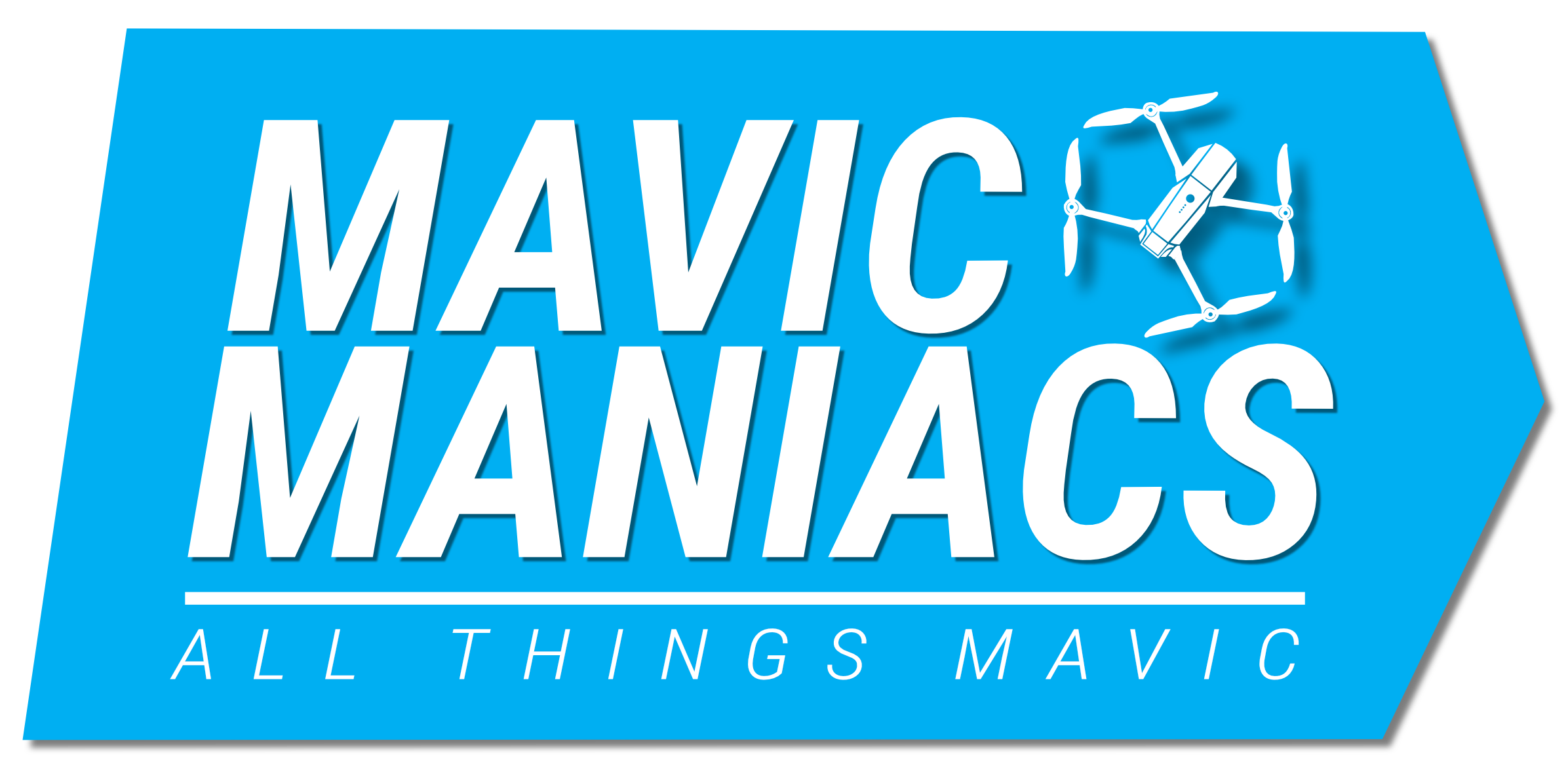




Wow, I was unaware just how sophisticated some of these drones are now a days. There seems to be endless possibilities to how you could use this unit, with all the expansions available for it. Are there certain laws governing the use and/or conduct with the use of these?
I can imagine that some folks would find ways to misuse them and that causes concerns for other people.
But the professional uses are phenomenal
Hello there,
Yes they are getting more sophisticated with each new model. There are so many laws regarding drone use and it varies from country to country. Check out my post, Get the FAA Drone License – Make Money Legally with Your Mavic on what you need to do in the US to use your drone for anything other than hobbyist use.
Sadly many people already use drones in a poor manner. Spying on others (invasion of privacy), terrorist using them to carry bombs, contraband drops into prison yards, the list goes on. Fortunately that’s a small fraction of drone pilots and not the community as a whole. Still, it tends to get more of the news feed attention than say those using drones for good such as firefighting, finding lost persons and so on.
Professional uses are growing. Agriculture, tower inspections, damage assessments, firefighting, etc. It’s actually a pretty amazing time for the drone industry.
Thanks for commenting!
This Mavic model looks amazing!
I love the kind of drones which has these absolutely amazing zoom features and great cameras.
Now however, recently I’ve found out the governments and police is trying to get them out of air since they are potential dangerous to other flying things and the privacy law..
Do you know if this is allowed?
Thanks for sharing it!
Each country has its own laws and regulations. Privacy, misuse, possibility for injury are all factors that play a role in the regulations and the agencies that try to enforce the laws. Sadly, many times, those enforcing are incorrectly trained or overzealous in their efforts and escalate situations or cause them in the first place.
Drones are relatively new to the landscape (at least in the large numbers we’re seeing now) and, as time passes, I believe such incidents will be reduced. Unfortunately recent incidents have brought drone legislation to the front lines of lawmaking and some laws are being implemented with little to no thought behind them and it’s hurting the industry. Hopefully things will get cleared up soon without putting too many restrictions on this growing industry.
Great review with very useful information and features.What I really like is the password protection. I am just wondering though, how safe do you think it is? I mean: how easy can it be hacked?I also like the AirSense as it makes me feel safe that it won’t crash even if I don’t notice something in the air. This is very important to me.And the loudspeaker is super cool. I just imagine it as part of a rescue mission to keep in touch with lost and found hikers as professional usage. There are so many good and life-saving opportunities in this drone, I am sure it will and has to spread among professional life-savers as well.
I don’t know if the unit is encrypted or if it could be hacked in some fashion that would give unfettered access to the device and it’s contents. I do think the password feature was mainly to prevent someone from flying the drone without permission as well as to access the data contained on it.
I like the speaker idea too however, I’m a little sad to find out that it will only play recordings. Sure you can record on the spot and then play but it’s not really a live solution. As for emergency and even entertainment use I can see it being useful. I know the prop noise would prevent this but I’d love some sort of 2-way communication option.
Thanks for taking the time to comment.
I could definitely have some fun with that speaker attachment – really cool. The beacon and the spotlight looks ideal for helping firefighters and rescue teams – pretty impressive. GPS time-stamping looks neat and the heated batteries could come in real handy. The airsense and password protection are nice safety additions but all in all this DJI Mavic 2 Enterprise drone is probably way overkill for anything I would use it for, except maybe the speaker. Will be interesting to see what other attachments they come out with.
That’s what I’m really waiting to see…What other attachments will people come up with? There are already fishing attachments for existing drones that can either drop bait or even you fishing gear when over the target area, etc. I bet someone will come up with something that will WOW me.
Thanks for commenting!
Awesome features in Mavic 2 Enterprise. I particularly like the camera zoom, loud speaker and spotlight that come with this piece. Seems like this version is highly suitable for night usage. In my country, it is hot throughout the day. That’s why enhancement of night features on Mavic 2 Enterprise is great for people like me who prefer to fly at night.
Thanks for taking the time to comment.
I have to admit, I have mixed feelings for the Mavic 2 Enterprise. I guess I was just hoping for more exciting accessories. I know it’s not aimed at the consumer but more to the commercial and emergency services organizations but still….
To me it really is a Mavic 2 Zoom with expansion port and a few software options.
May I ask where your from? Here, in the US we’re not supposed to fly after dark without proper clearances, at least not commercially.
Thanks again,
Scott